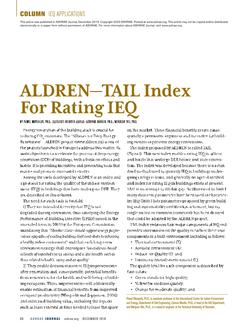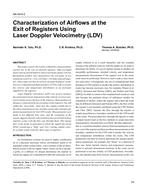A full-scale coupled indoor/outdoor environmental simulator (C-I/O-ES) was used to study the volatile organic compound (VOC) emissions from a typical residential wall assembly. The C-I/O-ES has a stainless steel outdoor climate chamber, a stainless steel indoor environmental quality chamber, and a test/separation wall shared by both chambers. The wall assembly tested was a 3.66 m × 3.05 m high (12 ft × 10 ft) section that was 0.2 m (8 in.) thick. It consisted of vinyl siding, vapor open weather barrier (house wrap), 0.012 m ( in.) oriented strandboard (OSB), 0.15 m (6 in.) mineral wool (fiber batt) insulation, polyethylene vapor barrier, 0.012 m ( in.) gypsum wallboard, and water-based paint. The wall assembly was constructed in four stages: (1) OSB board with the wall frame; (2) adding the vinyl siding, house wrap, insulation, plastic vapor barrier, and gypsum wallboard; (3) adding two coats of paint; and (4) adding a window. For each construction stage, VOC concentrations in both the climate and IEQ chambers were measured, and emission rates were calculated. The effects of the multi-layer system, air velocity, and air change rate on the contributions of each individual material in the assembly to the VOC concentrations in the IEQ chamber are discussed in this paper based on the measured data. In addition, a one-dimensional multi-layer VOC diffusion model was developed for the wall assembly. The parameters (diffusion coefficient, partition coefficient, and initial concentration) of VOC transport in individual materials were obtained from smallscale chamber tests and used in the model. Comparison of simulation and experimental results show that the model prediction agrees well with the experimental data.
Units: Dual
Citation: ASHRAE Transactions, vol. 111, pt. 1, Orlando 2005
Product Details
- Published:
- 2005
- Number of Pages:
- 8
- File Size:
- 1 file , 480 KB
- Product Code(s):
- D-25655


